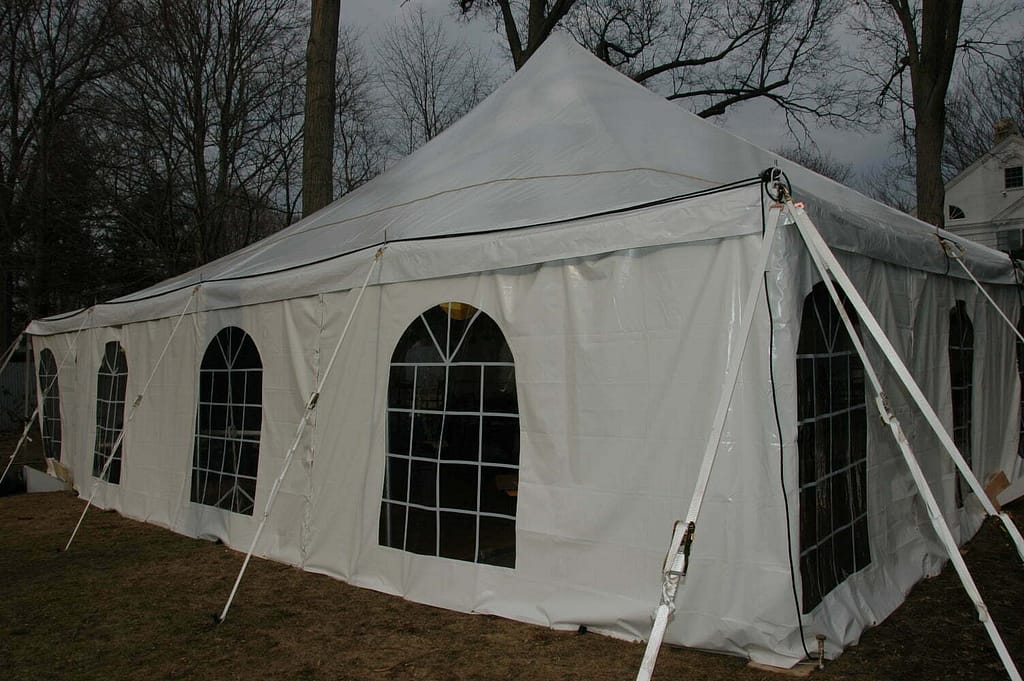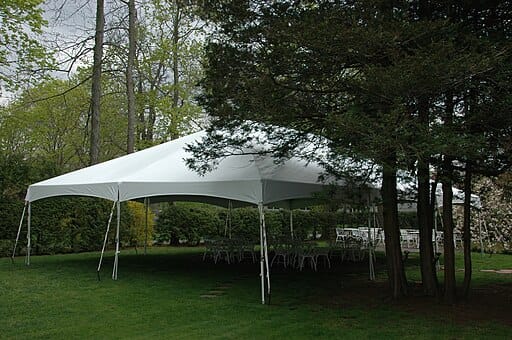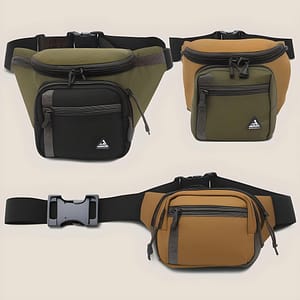Welcome, fellow adventurers to the world of Frame Tents – where nature and hilarity collide in a symphony of outdoor shenanigans! If you’re tired of wrestling with poles and flapping fabrics that act like they’re auditioning for a comedy sketch, then it’s time to embrace the Frame Tent life.
One of the first times I went camping, excited for a few days of clearing my head in nature only to discover that setting up my tent felt like a game of extreme Twister with misplaced stakes. Suddenly, a wild gust of wind decides to join the party, turning my “outdoor haven” into a 3D puzzle. Ah, the joys of camping. With a few simple moves, it’s up and ready, leaving you ample time to enjoy the great outdoors without a wrestling match. It’s the ultimate revenge against those sneaky gusts of wind.
The Frame Tent is a good solution, standing tall and stable like guardian watching over your campsite as you indulge in toasted marshmallows. So, if you’re ready to upgrade your camping experience I am sure this article will interest you.
What is a frame tent?
A Frame Tent is like the superhero of the camping world. It’s a tent that is supported by a sturdy framework made of metal or aluminum poles, rather than relying on stakes and ropes like traditional tents. Picture your tent standing tall and proud, like a soldier protecting your sleep from the perils of the great outdoors. Say goodbye to the frustrating game of trying to untangle those pesky tent poles only to have it collapse like a house of cards at the slightest gust of wind. With a Frame Tent, setting up camp is as easy as pie. Just unfold the tent, secure the poles, and you’re done.
How long does it take to set up a frame tent?
The good news is that frame camping tents are generally easier and quicker to set up compared to their traditional counterparts. No wrestling with tons of tent poles or getting caught in a tangled mess of ropes. With a frame tent, you can be kickin’ back with a cold one in no time. However the time it takes to set up a frame tent can vary depending on a few factors. The size of the tent is a biggie. The larger the tent, the more time and effort it’ll take. So, if you’re planning on housing a small army in there, you might want to allocate some extra minutes for setup.
The next factor is your experience level. If you’re a seasoned pro at setting up tents, you’ll likely breeze through the process with your eyes closed. But if you’re a camping newbie, the frame tent is here to save the day.
Even if you’ve never set up a tent before, the frame tent is designed to be user-friendly. It’s like the IKEA of tents but without confusing instructions and missing screws. The poles are usually color-coded or labeled for easy assembly, so you don’t have to play a guessing game about which pole goes where. And trust me, nothing kills the camping mood faster than trying to MacGyver your way through a tent setup.
With a frame tent, you can impress your camping buddies with your tent-building prowess, even if you’ve never gone camping before. Just make sure you don’t accidentally put the rainfly on the inside of the tent. That’s a classic rookie mistake that no frame tent can save you from.

What is the size of a frame tent?
Frame tents come in all shapes and sizes. There are small frame tents, big frame tents, and everything in between. It’s like a tent buffet, where you can choose the size that suits your needs.
But let’s get down to the nitty-gritty. The size of a frame tent can vary greatly, depending on the manufacturer and the specific model. Some frame tents are designed for solo adventurers, offering just enough space for you and your trusty backpack. These little guys can be as small as 1-person tents, measuring around 2 meters by 2 meters (6 feet by 6 feet) or so. Perfect for those who like to travel light and cozy.
On the other end of the spectrum, we have the granddaddies of frame tents. These behemoths can be as large as 6 meters by 6 meters (20 feet by 20 feet) or even bigger. They’re like the RVs of the camping world, offering ample space for families and friends, .
Does a frame tent require assembly?
Yes, a frame tent does require assembly, but It’s not rocket science. All you have to do is connect the frame pieces together and secure them with some handy-dandy clips or brackets. It’s like building a tent-shaped puzzle, but with more sweating and less cursing (hopefully).
What materials are used to construct a frame tent?
Frame tents typically feature a sturdy frame made of either aluminum or steel. These materials providing strength and stability to your humble abode in the wilderness.
Aluminum frames are the lighter option, and we all know that when it comes to carrying things on our backs, a lighter is always better. They’re also resistant to corrosion, which means they won’t rust away like that old bike you left outside last winter.
On the other hand, steel frames are the heavyweight champions. They bring the big guns when it comes to durability and can handle even the toughest camping adventures. They might be a bit heavier, but hey, when you’re building a fortress in the wild, a little extra weight is a small price to pay for security.
Now, onto the tent fabric itself. The main body of a frame tent is typically made from a heavy-duty polyester or nylon material. These fabrics are chosen for their water-resistant properties, keeping you dry when rain decides to crash your camping party. Plus, they’re tough enough to withstand the occasional scrape against sharp rocks or branches, because let’s face it, nature can be a bit rough around the edges.
To make sure you’re not suffocating inside your tent, frame tents also come equipped with mesh panels. These panels are usually made from a fine, breathable material, allowing fresh air to flow through while keeping bugs at bay.
What are the disadvantages of a frame tent?
While I mentioned earlier that a frame camping tent is as user-friendly as can be, it still requires assembly. Sure, It’s relatively easy, but if you’re not a fan of putting things together, it can be a bit of a hassle. Just remember to take a deep breath, channel your inner Bob the Builder, and you’ll be fine.
Another downside is the weight. Compared to other types of tents, frame tents tend to be a bit on the heavier side. So if you’re planning on backpacking through the wilderness, you might want to consider a lighter option. Unless you’ve been hitting the gym lately and want to show off your tent-carrying muscles, of course.
Lastly, let’s address the elephant in the tent – wind resistance. When it comes to wind resistance, frame tents are usually pretty reliable. Those sturdy frame pieces, once assembled correctly, can withstand a good amount of wind. But, and here’s the big but, they do have their limits.
You see, frame tents are not exactly aerodynamic wonders. So, while a frame tent can handle a gentle breeze like a boss, when the wind starts picking up its pace, things can get a bit shaky.
If you find yourself camping in an area known for its windy conditions, you might want to consider other options. Maybe a dome tent or a tunnel tent would be more suitable. They’re designed to be more aerodynamic and can handle stronger winds without turning your camping trip into a kite-flying adventure. But hey, if you’re not planning on pitching your tent in a wind tunnel, a frame tent should do just fine. Just make sure to stake it down properly and add some extra guy lines for added stability.

how much will it cost me?
On average, a basic frame tent can range anywhere from $100 to $500. Now, I know what you’re thinking – that’s quite the range! But fear not, my frugal friend, there are affordable options out there.
If you’re willing to make some compromises on size and extra bells and whistles, you can snag a budget-friendly frame tent for around $100. It may not have all the fancy features like built-in LED lights or a mini-fridge (hey, a girl can dream), but it’ll get the job done.
Of course, if you’re looking for something a little more spacious or durable, you might have to dig a bit deeper into your camping fund. For a larger frame tent with all the fancy add-ons, you could be looking at a price tag of around $300 to $500.
Now, keep in mind that these are just average prices. You might be able to score a sweet deal during a sale or find a hidden gem in the clearance section. And let’s not forget our trusty friend, the internet. Shopping online can often give you more options and better deals than your local camping store.
Final verdict?
In conclusion, the Frame Tent offers a mix of benefits and disadvantages that every camper should consider.
On the bright side, the Frame Tent’s most significant advantage is its easy assembly. No more frustrating struggles with tent poles and flapping fabrics – with a Frame Tent, setting up camp becomes a breeze. This means more time for exploring nature and creating cherished memories with friends and family.
Additionally, the Frame Tent’s sturdy structure provides excellent stability, making it a reliable companion during windy days.
Furthermore, the spacious interior of a Frame Tent offers generous headroom and room to move around. It’s perfect for those who like a little extra wiggle room inside their temporary abode.
However, there are also some downsides. Its ease of setup often comes at the cost of increased weight, making it less suitable for backpacking or long-distance treks. If you’re planning an expedition to remote and hard-to-reach places, a lighter tent might be a better choice.
Another consideration is the cost. Frame Tents can be more expensive compared to traditional tents, primarily due to the added features and materials that make them easy to set up and durable.
Lastly, while the Frame Tent offers stability and shelter, it may not be the most aerodynamic design. In extremely windy conditions, it might not handle gusts as gracefully as a dome or geodesic tent. So, if you’re a seasoned adventurer seeking camping peak wind season, you might want to rethink your tent choice.
In the end, the choice between a Frame Tent and other tent types boils down to personal preferences and camping style. Whether you prioritize convenience and comfort or are an avid backcountry, understanding the benefits and disadvantages of a Frame Tent will help you make an informed decision and ensure a better camping experience.





